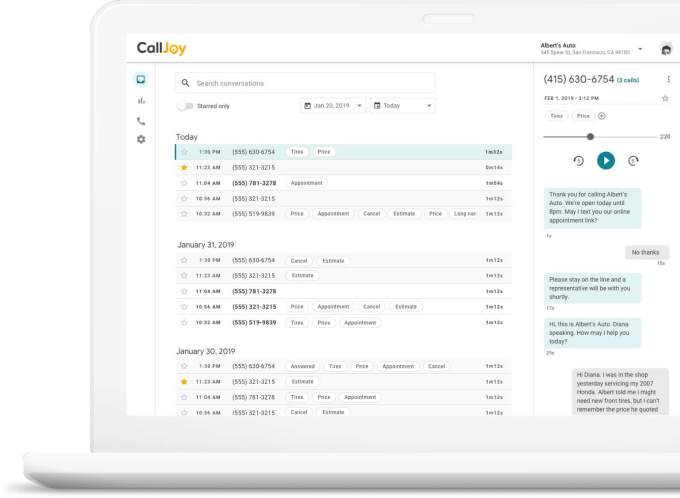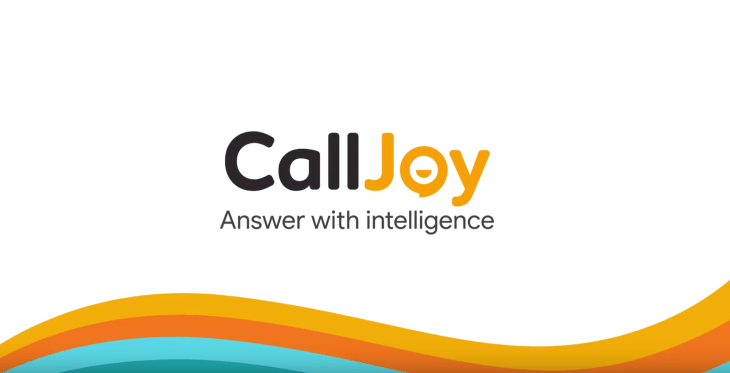Google is combining several technologies, including virtual phone numbers, audio transcriptions, automated reporting and analytics, in a new effort to help small business owners better manage their inbound phone calls. The company’s latest project from its in-house incubator is CallJoy, launching today. Aimed at the U.S.’s 30.2 million small business owners, the system offers a low-cost customer service agent that helps block spam calls, provide callers with basic business information and redirect customers to complete their requests — like appointment booking or placing a to-go order — over SMS.
Any other calls or questions would be directed to the main business phone number.
Typically, customer service phone agents like this are out of reach for small business owners, but CallJoy is priced at a flat monthly fee of $39 to make the technology affordable.
Like other virtual customer service systems, CallJoy can greet the caller and offer basic information like the business hours or address, for example. It also frees up the business owner from having to deal with the ever-increasing number of spam calls that waste their time, and can move customers off of phone lines to complete tasks online, where appropriate.
To do so, CallJoy’s virtual agent can send a customer who opts in an SMS text message that includes a URL where the task — like appointment booking or online orders, for example — can be completed.
For example, the agent may ask the customer “Can I send you our food ordering link?” If the customer says “yes,” the text is sent immediately. In addition, the feature can be customized for sharing other types of information — like the company’s email or where to find an online contact form.
If the customer is calling from a landline, however, this textback feature will be disabled and they’ll be directed to the business line instead.
Like other customer service software that alerts callers that calls “will be recorded for quality assurance purposes,” CallJoy records the incoming calls (which is also disclosed). This can help cut down on spam calls because once spammers know the call is recorded, they usually hang up.
The recorded calls are also encrypted and transcribed, and these transcripts then become searchable in the CallJoy dashboard.
Here, call information — including the phone number, audio and transcript — is stored. The business owner can also go back and tag the calls in order to run reports that help them gain insight into their business. For example, if a salon got a lot of inbound calls about “wedding hairstyles” they may then decide it would make sense to include this information on their website; or a restaurant may want to track how many calls it gets per night for reservations.
 Other insights are available, too, like call volume, peak call times and new versus returning callers. These are displayed in the online dashboard and sent out in a daily email.
Other insights are available, too, like call volume, peak call times and new versus returning callers. These are displayed in the online dashboard and sent out in a daily email.
The service works today with existing landlines, mobile phones, Google Voice lines or other cloud providers by routing calls to the business phone number.
But phone numbers are not ported to CallJoy. Instead, similar to Google Voice, the business would select their virtual CallJoy number with their local area code.
To start receiving calls there, they’d have to update all their business information with this new number — including the website, business cards, online listings, ads, social media and anywhere else the number appears.
CallJoy is also tied to only one location and one phone number. Additional locations with their own lines can be added within the CallJoy dashboard, but businesses are charged per line.
At launch, CallJoy is available on an invite-only basis. Businesses must request a spot on the waitlist from the CallJoy homepage. More invites will be shared every day; eventually, the system will open to all.
